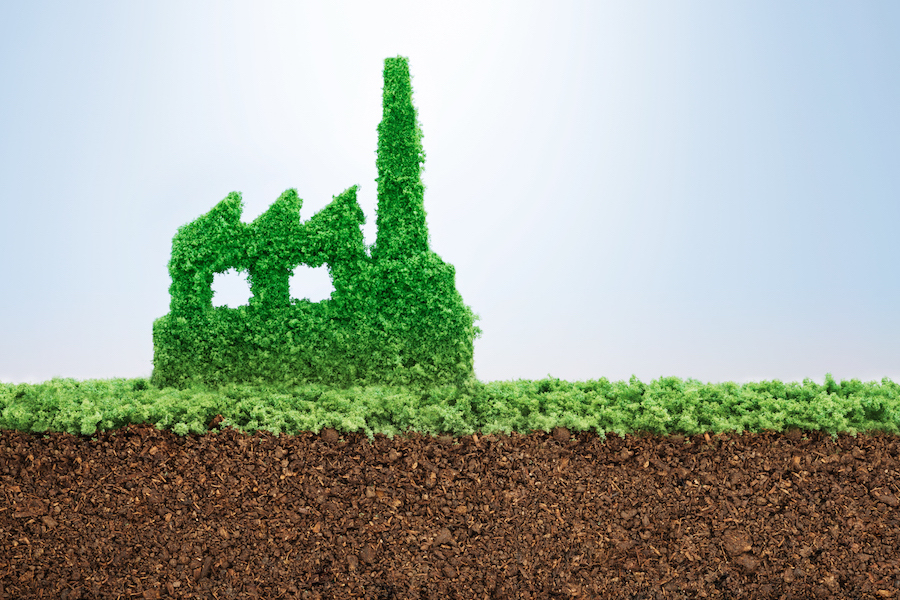Mar 03, 2021 by Mark Dingley
As sustainable manufacturing continues to gain momentum some of the questions facing manufacturers include – are you using plastic free packaging; what happens to packaging once it’s in a consumer’s hands; and how can you help reduce food waste?
Whilst there’s no single common definition, the Organisation for Economic Co-operation and Development (OECD) says it is the “creation of manufactured products through economically sound processes that minimise negative environmental impacts while conserving energy and natural resources.”
In short, sustainable manufacturing is about being economically sound, as well as environmentally and socially responsible.
Once seen as an expensive endeavour for manufacturers, it is being increasingly recognised as a business imperative.
Fortunately, some big names are already leading the way. For example, Nestle has recently announced their desire to make 100% of their packaging either recyclable or reusable by 2025. This is similar to Unilever’s 2017 commitment that 100% of their plastic packaging would be fully reusable, recyclable or even compostable by 2025. Buckingham Palace has also joined the war on plastic – the Queen has banned plastic bottles and straws from the royal estates!
It’s not only global corporations who are jumping on the sustainable manufacturing bandwagon – local manufacturers are also leading the way in tackling a variety of sustainability challenges. And here’s how:

Did you know that only 14% of plastic packaging is collected for recycling? The rest of it eventually finds its way into the ocean. Research conducted by the Ellen MacArthur Foundation (EMF) found that, every minute, an astounding dump truck’s worth of plastic goes into the ocean.
These statistics are confronting – and are the reason why supermarket giants Coles and Woolworths did away with single-use plastic bags back in 2018.
Some organisations aren’t satisfied with simply pledging to reduce plastic packaging – instead, they’re busy coming up with alternatives. Last year’s winner of the AIP award for Retail Primary Packaging, Australian-based company Plantic Technologies, have created innovative ultra-high barrier bio-plastic materials that can be used for packaging. The PLANTIC™ R sees the best bio-based, high-barrier materials combined with PET to create a recyclable material that is suitable for thermoforming and tray-sealing applications, as well as increases the shelf-life of packaged meats. Its production requires only about half the energy that is required in the production of traditional fossil fuel plastics.
Sirane is another company that is showing how it’s possible to supply 100% compostable packaging solutions that are also effective. This UK-based food packaging company launched a plastic-free compostable food pouch known as Earthpouch. It’s comprised of paper with a 100% plastic free heat-sealable coating in a stand-up pouch construction. It provides complete food security for both dry and wet food products – plus can be recycled with your papers and is fully compostable.
At the Plasticity 2017 conference held in Sydney, industry experts discussed how an EPR scheme could mean that producers were given incentive to change their product design, thereby making it easier for products to be recycled or reused.
A critical part of this process is consumer education. Research has shown that many consumers are unsure about what packaging can be recycled and what can’t be. This is why the Australian Packaging Covenant Organisation (or APCO) developed the Australasian Recycling Label (ARL), which highlights what needs to be done with each piece of packaging. Woolworths was actually the first supermarket back in 2017 to adopt the ARL across their own-brand product range.
The system also helps to guide manufacturers in making the right choices. APCO’s CEO, Brooke Donnelly, told the ABC that “it’s a first in Australia, the ability to be able to evaluate a packaging format in the design phase and make a very conscious choice to create packaging formats that are designed for recycling or reuse.”
Food waste is, unfortunately, a colossal challenge. Australian consumers throw around close to an incredible 3.1 million tonnes of edible food a year; it’s estimated to cost our economy $20 billion dollars each year.
Consumers aren’t the only ones throwing food away, however – research in the UK has found that the food manufacturing sector is responsible for the bulk of edible food wasted there. Back here in Australia, the story isn’t much better – it's estimated that as much as 40% of fresh produce from our farms is rejected before it even arrives on supermarket shelves.
To tackle this issue at the source, some manufacturers are using by-products to create other value-added products.
Hartshorn Distillery, a Tasmanian-based business, uses sheep whey (a by-product from making cheese) to produce alcoholic beverages – gin, vodka and a vanilla liqueur. Ryan Hartshorn, the owner of the business, told Food & Beverage Magazine that “we’ve been trying to use our waste almost from the beginning. We do a few other little lesser-known products like making fudge from whey. We also make some of our older sheep into a sausage that we sell through our cheesery. And we make a fruit paste that goes with our cheese from the waste of wine making.”
Plenty of other businesses have similar ideas. Banana farmers located on the far north Queensland Tablelands, for example, have turned their banana seconds into a range of gluten-free green banana flour products. And Kalfresh, Scenic Rim vegetable producers, process ‘waste’ carrots into pre-cut and bagged shredded, circle and stick options.
With the spotlight on sustainable manufacturing, the pressure is now on manufacturers to be proactive with their solutions. One thing we can take away from the examples given above, it’s that we can’t drive sustainable business by doing the same thing we always have. As Australian manufacturers, we need to think creatively and innovatively to develop new ways of thinking.